In this article, I’m going to share a multitude of content brief examples.
I’ll show you the content brief I created for the thruuu blog.
You’ll be able to see:
- How I structure a content brief
- The level of detail involved in each content brief
- The final result of each content brief example
I’ve selected a variety of content briefs to showcase different article formats, such as listicles, product reviews, and educational content.
Hopefully, these examples will inspire you to craft your own.
I’ll also share downloadable versions of each content brief example so you can use them as templates.
Table of Contents
Understanding the Basics of a Content Brief
Do I need to explain what a content brief is? You already know, right?
I can explain why I create content briefs.
Most of the content on the thruuu blog is written by external freelance writers. The only way to clearly communicate my requirements for each article is by crafting a detailed content brief.
I write the content brief; they write the articles.
I rarely have calls with my writers, and we keep chat interactions to a minimum. It’s not that we don’t want to communicate more, but a detailed content brief helps us avoid unnecessary back-and-forths.
We save time, cutting down on endless messages and meetings.
You’ll notice that my content briefs are packed with details. I will cover everything in the next section.
This level of detail is essential to giving the writer the correct information. They know how to structure the content, who the audience is, and what the article’s goal is.
So, why do I create content briefs?
- To scale my content production
- To provide writers with the correct information
- To maintain high-quality content
- To centralize all relevant information
- To minimize unnecessary communication
Key Components of an Effective Content Brief
When I create a content brief, I always follow the same template and include the following key elements:
- Writer directives, goals, and guidelines
- Search intent
- Article meta information (title, description, slug)
- Word count
- Content outline
- Most frequent questions and topics to cover
- Competitor analysis
- Suggested readings
Your content brief could include many components. For a comprehensive view, explore our content brief library, where you’ll find templates and more detailed information.
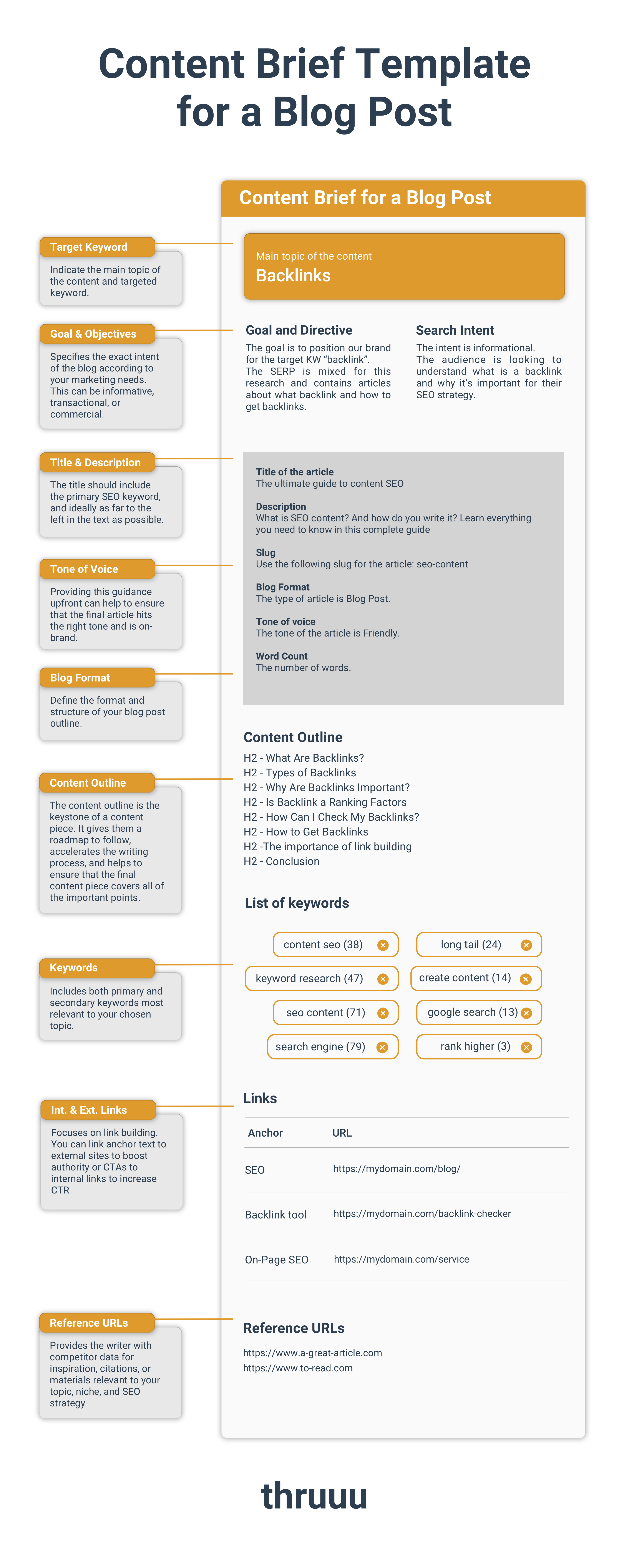
Here are the elements I consider essential:
Clear Objective and Goals
It’s essential to explain to your writer why the article is being created.
Sure, the goal is to rank and attract traffic, but there’s usually more to it. You may promote a specific feature or service or educate a new audience.
Providing this context ensures the writer knows the deeper purpose behind the content.
Target Audience Analysis
In SEO, understanding your audience often means analyzing search intent. You need to know why people are searching for this topic and what they expect to find.
Knowing the audience’s stage in their journey is crucial.
Are they just starting their exploration, or are they already familiar with the topic? Depending on this, your content may need to focus on different details.
For example, I didn’t start by explaining what a content brief is in this article because I assume you already know. Instead, I focused on why I use content briefs, offering insight from my perspective.
Content Structure and Outline
The content outline is the most important element of the brief.
When creating an SEO content brief, I spend the most time crafting the heading structure.
Of course, this needs to follow SEO best practices. Headings should include your target keyword and related terms.
However, ensuring the content flows well and provides an enjoyable reading experience is also essential.
You’ll notice that I added many comments to the brief. It’s like a mini draft of the article, offering even more guidance to the writer.
Examples of Content Briefs
Below are the content briefs I use to create articles for the thruuu blog.
These examples cover various formats, so you can observe how their structure differs based on the type of article.
Product Review Content Brief Examples
Product reviews are a vital content format for a SaaS business, as they help drive both traffic and conversions. I’ve published several product reviews on the thruuu blog.
The first content brief example reviews PAA Scrapers, tools for extracting “People Also Ask” data.
The public version of this content brief can be accessed here: PAA Scraper Content Brief.
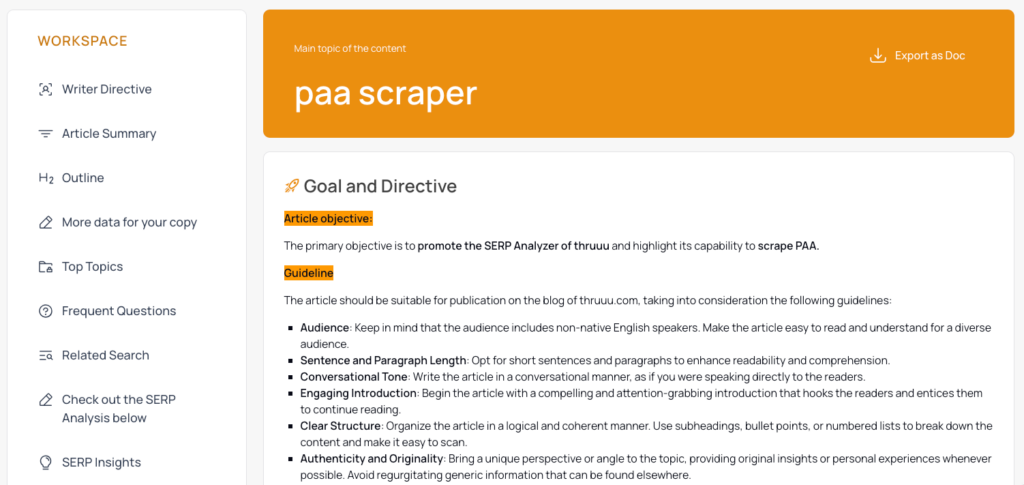
With the thruuu content brief generator, you can easily create and share detailed briefs with your writers.
It also lets you download the content brief in MS Word format, which is handy. Simply open the public brief and click on “Export as a Doc“.
Here are a few key points to notice in this content brief:
- Objective: In this section, I explain the goal of the content. In this case, it’s about positioning thruuu as an excellent tool for extracting PAA and on-page questions from the SERPs. This is the main focus of the article.

- Outline: The article follows a specific structure. It begins by explaining what you can get from a PAA Scraper. Then, it includes a list of our top PAA Scrapers and a FAQ section.
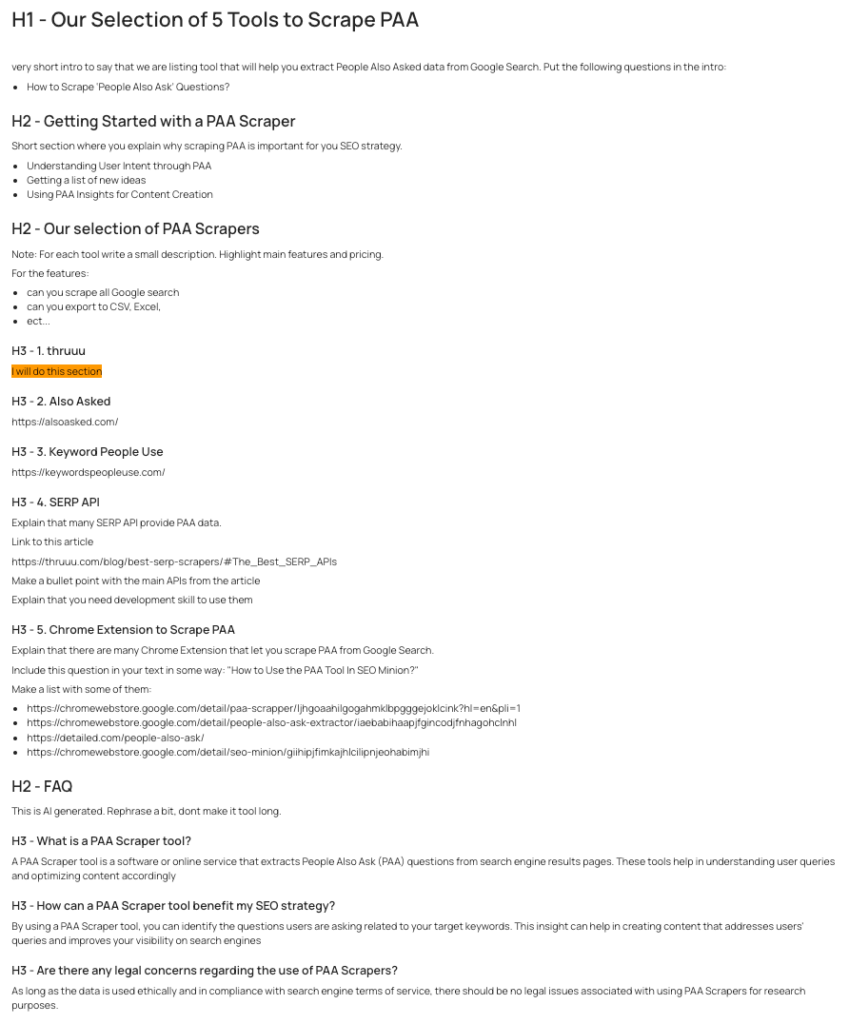
You’ll notice that the outline structure remains consistent in the following examples of product reviews.
The thruuu content brief generator is especially useful here, as it allows you to generate an AI-driven content outline that adheres to a specific format.
Essentially, you can create a prompt that provides context and instructions to the tool, helping to shape the heading structure. Below is an example of what that prompt looks like:
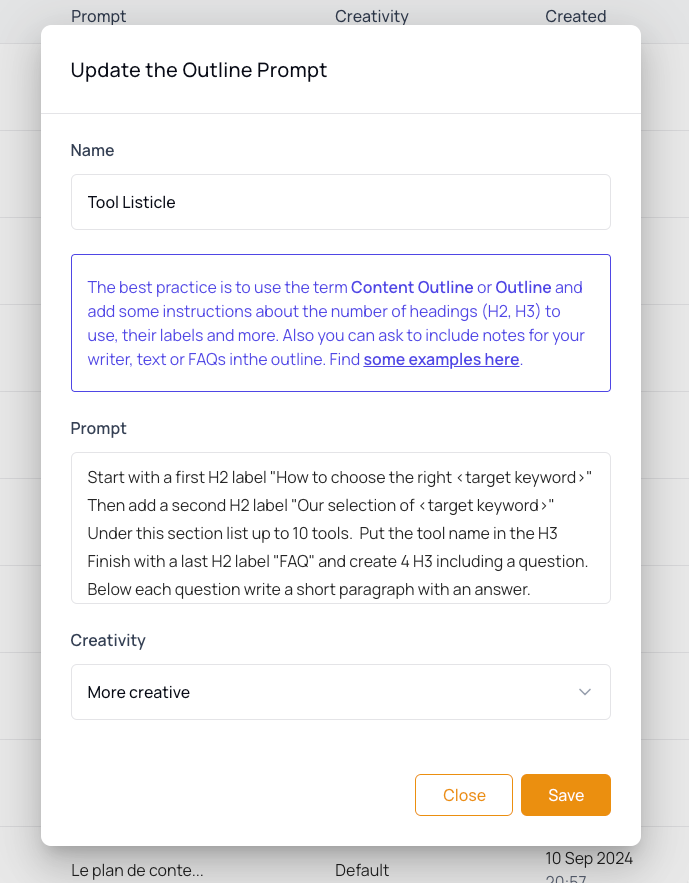
Another important aspect of this content brief is that I provide notes to the writer under each heading.
You’ll see this in every content brief example. These notes guide the writer, helping ensure that the content meets the necessary criteria.
Using a FAQ section at the end of the article is a smart SEO strategy. It signals to search engines that your content covers a specific topic thoroughly while keeping the core content, which the reader is most interested in, at the top.
In the article about the best keyword clustering tools, for instance, I also use the FAQ to link to other articles, which I clearly indicate to the writer.
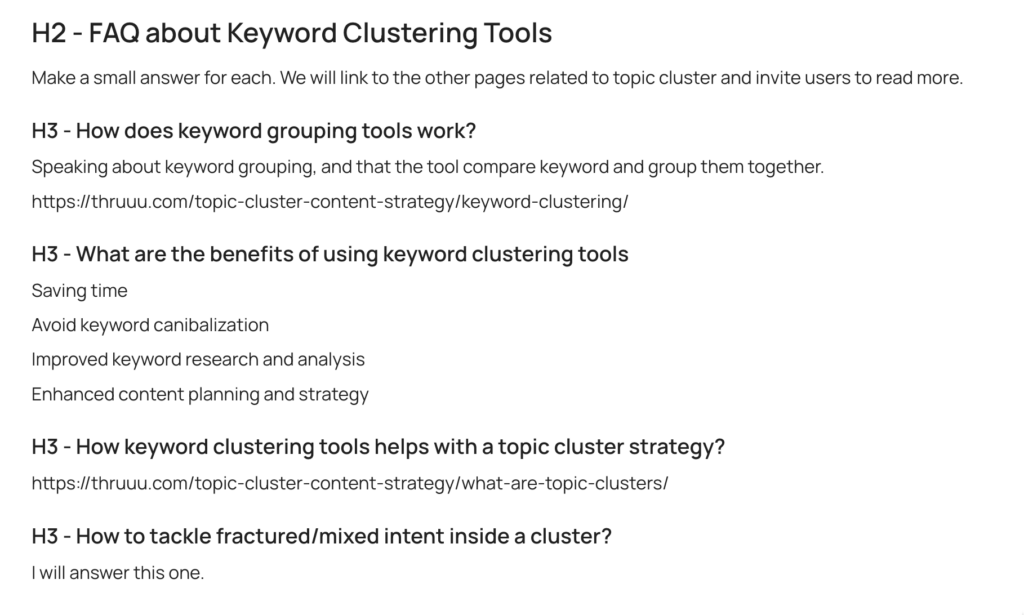
More Product Review Content Brief Examples
If you’re looking for more examples, check out these additional content briefs:
| Article | Related Brief |
| PAA Scrapers | View content brief |
| Content Analysis Tool | View content brief |
| Keyword Clustering Tools | View content brief |
Informational Article Content Brief Examples
Informational or educational blog posts are essential for building your brand’s authority and visibility at the top of the funnel.
From my experience, this type of content is also ideal for outsourcing to external writers.
The first educational content brief example is focused on SEO Content Hubs. You can find the public link to this brief and download the MS Word version directly.
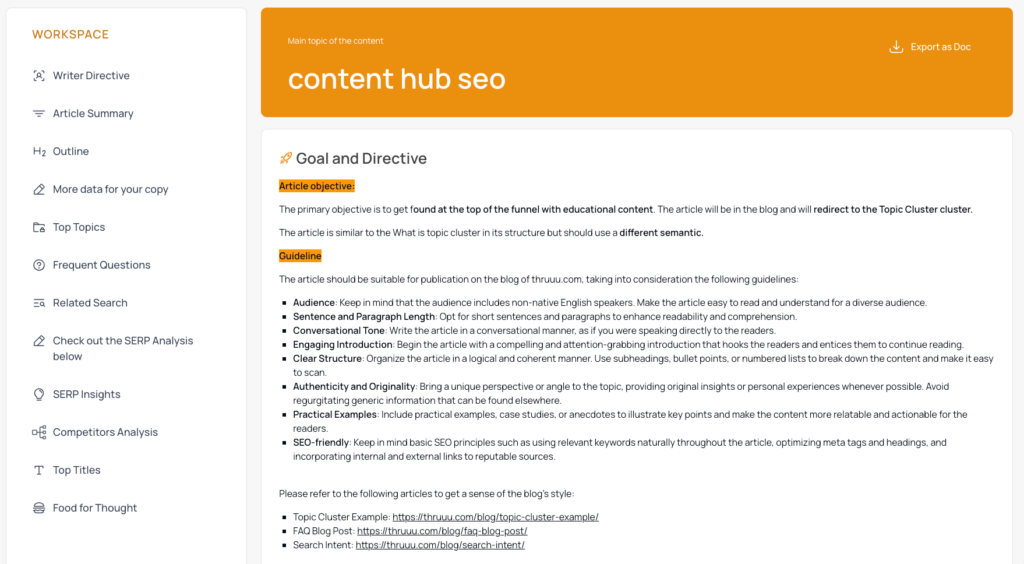
Providing clear guidance to your writer is crucial.
For this brief, I highlight that while we have a similar article about Topic Clusters, the writer needs to follow a different semantic approach.
Since the same writer handles both articles, they understand the subtle differences required.

It’s essential to clearly state your writers’ word count, especially when working with freelancers.
Since many charge by the word, this helps manage your budget. Plus, indicating word count also gives the writer an idea of how in-depth the content should be.
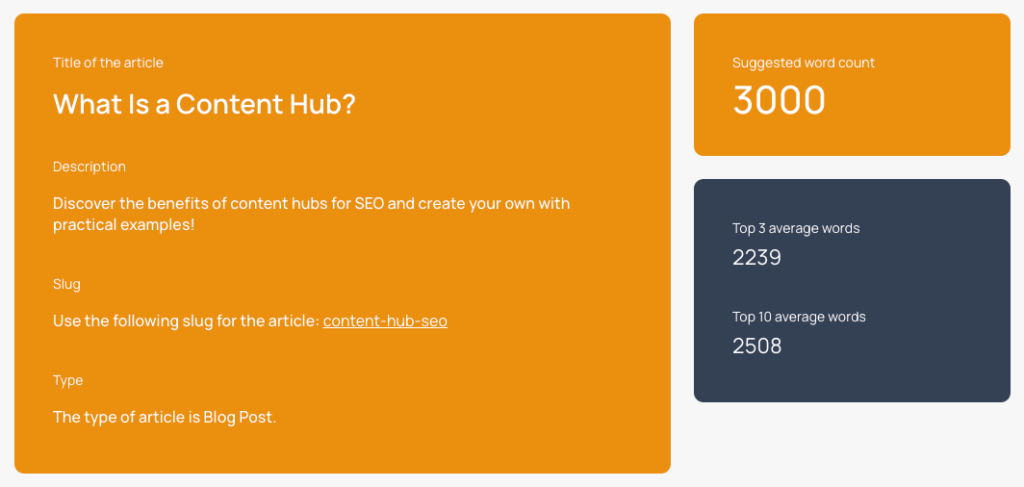
To provide even more clarity, I include notes in the outline, guiding the writer on whether to keep a section brief or focus more on specific areas.
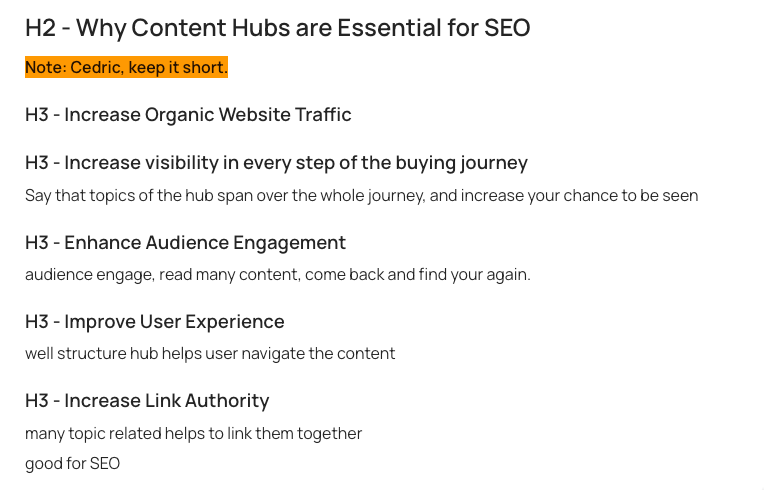
Sometimes, I even specify the exact number of words I want for a particular section. This helps maintain balance within the article and ensures focus on the most important information.
In some cases, I specify that I will write certain sections. This typically happens when the section requires specific expertise, such as when the focus is on the product.
I prefer to handle these sections directly to avoid wasting time and budget.

As shown in this article on pillar pages, which follows a question-and-answer format, I list key information for each section. This approach brings the article close to a draft state, making the writer’s job easier.
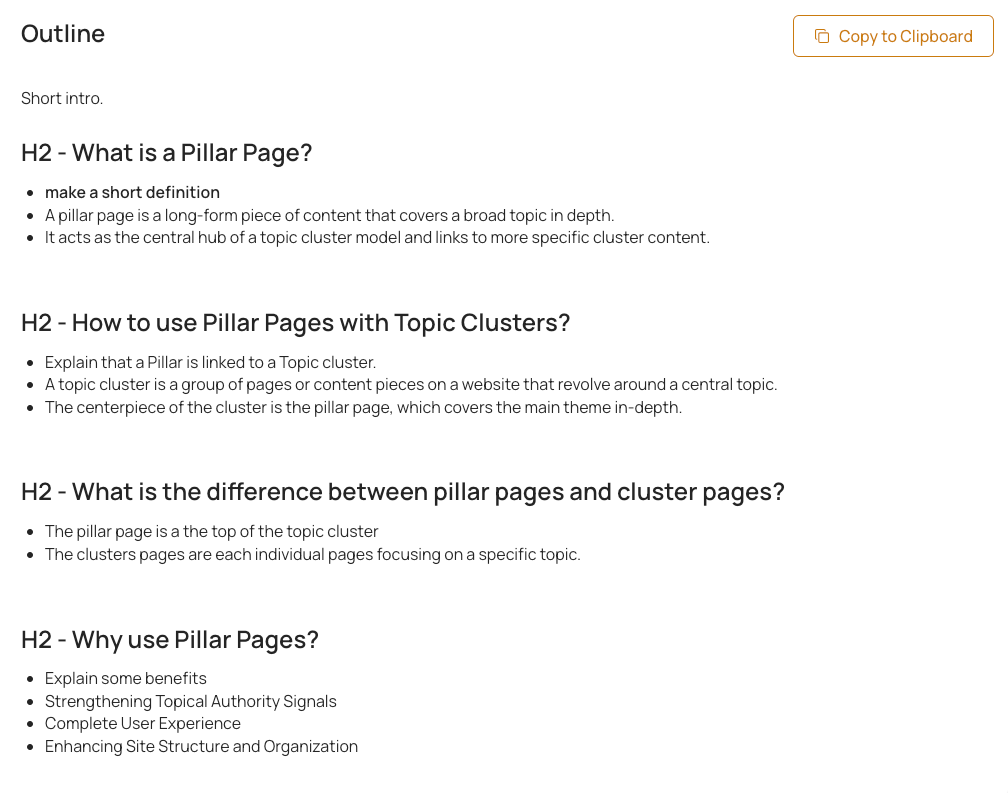
I also like to include social media content in my briefs, such as interesting LinkedIn posts. I inform the writer to check out the post and summarize its key points within the article. This adds a fresh perspective to the content.
More Educational Article Content Brief Examples
| Article | Related Brief |
| UGC and SEO | View content brief |
| SEO Content Hub | View content brief |
| Pillar Page | View content brief |
Listicle Content Brief Examples
Listicles are a highly popular and easily delegable format for writers. However, providing clear guidance is essential to ensure quality.
The first listicle content brief example focuses on marketing content for each funnel stage. The public version of the brief and the related MS Word version are available here.

A key aspect of this brief is the search intent analysis.
As an SEO strategist, it’s critical to understand your audience and explain to your writer why people are searching for the topic.
This understanding helps guide the writer in crafting the proper structure and phrasing for the article.
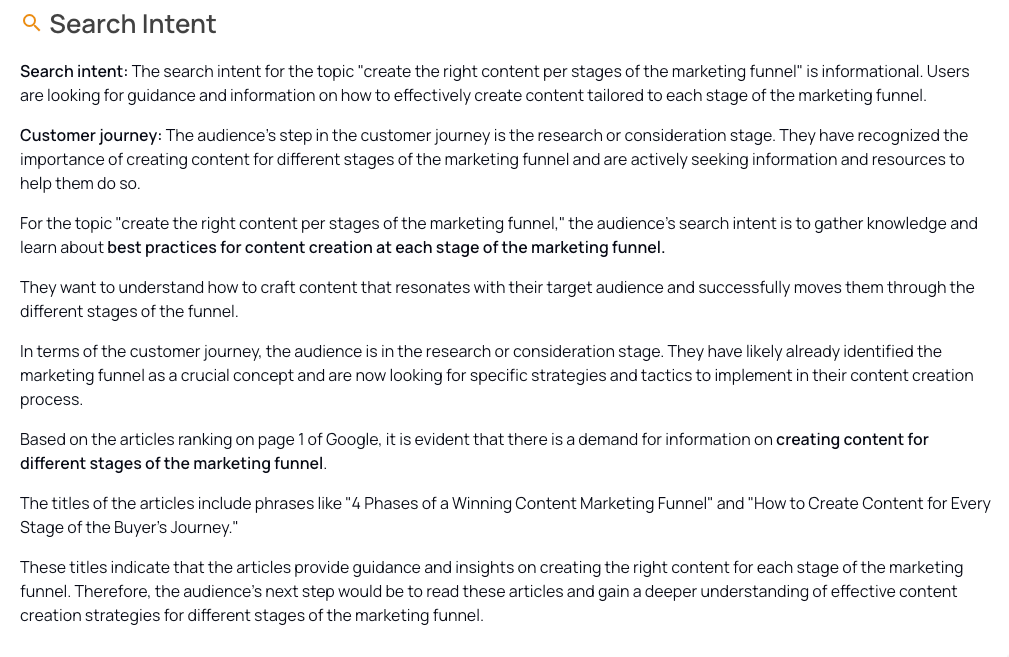
The thruuu Content Brief Generator can assist in analyzing the top-performing articles on the SERPs and help decipher user intent.
This insight ensures the article aligns with what readers are actually looking for.
Once again, you’ll notice that I include plenty of notes throughout the brief to guide the writer. These notes ensure that the article stays on track and meets my expectations.
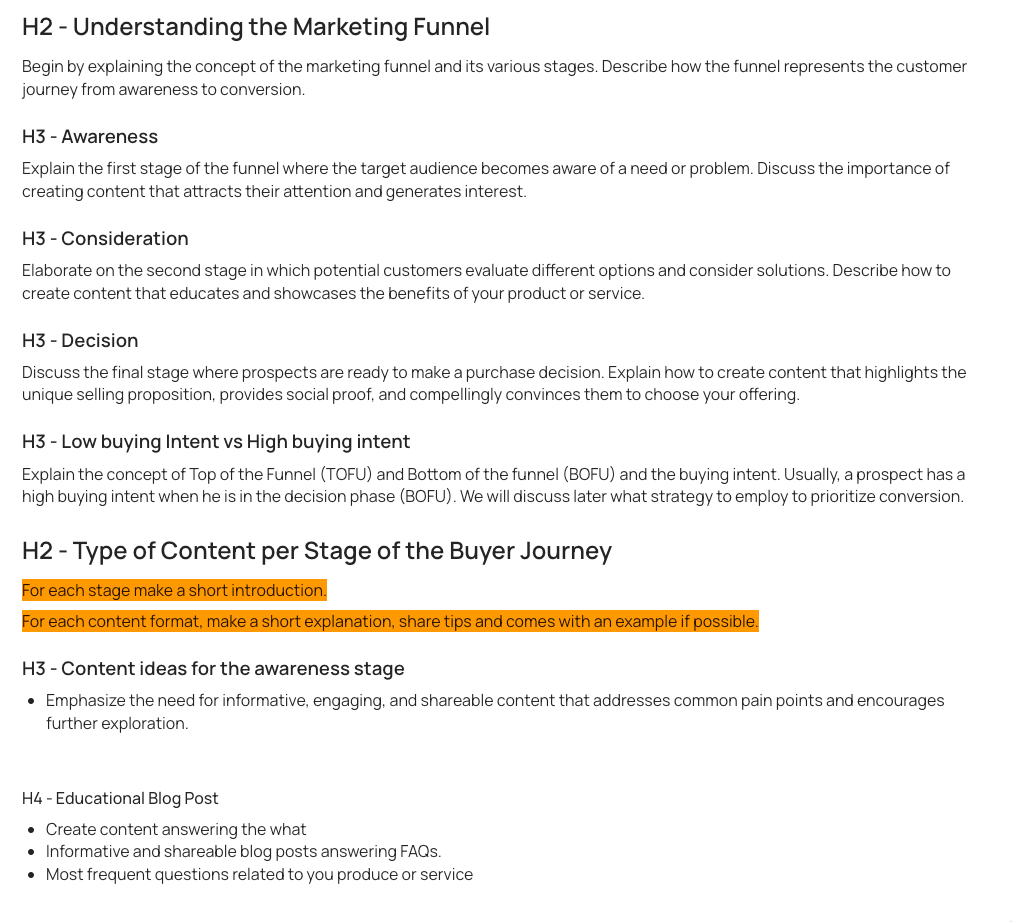
In all my briefs, I also list the key topics to be covered.
This helps the writer incorporate the right variations and synonyms, which in turn helps search engines understand the semantic relationships within the text.
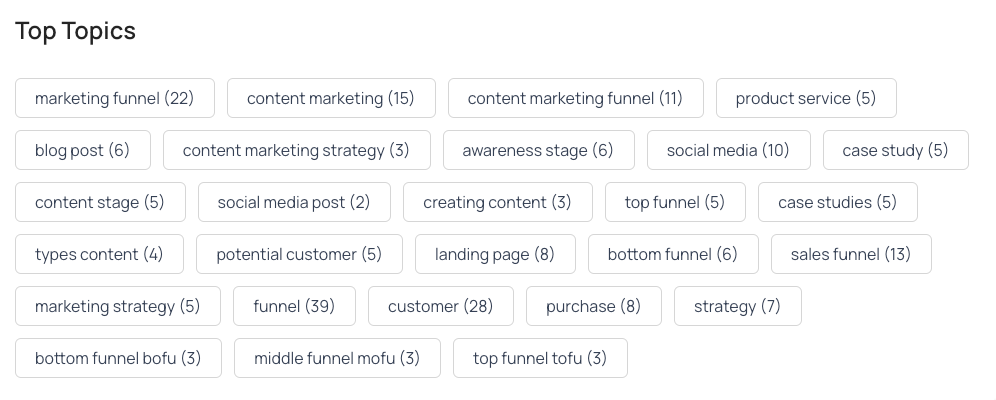
Another critical element is the inclusion of references and articles to read. In this case, I found a helpful LinkedIn post and asked the writer to draw inspiration from it.
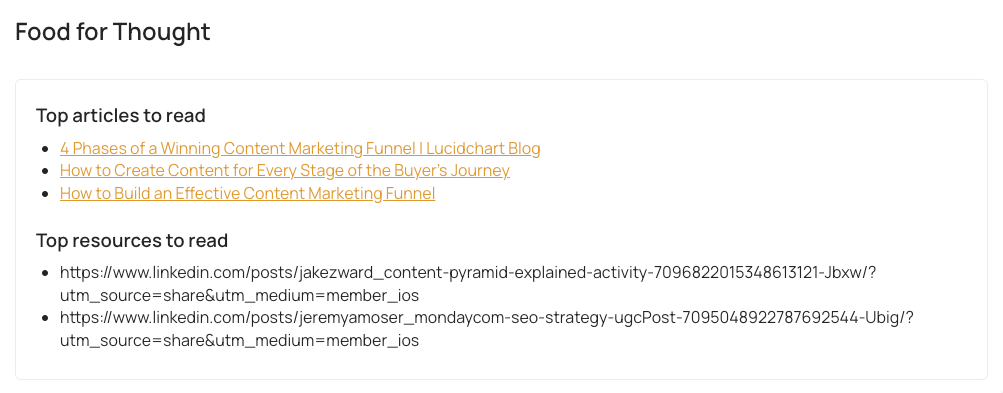
More Listicle Content Brief Examples
| Article | Related Brief |
| Content Marketing Funnel | View content brief |
| SEO Blog Template | View content brief |
Best Practices for Creating Content Briefs
Here are my top tips for compelling content briefs in under 30 minutes.
Conduct Thorough Research
I only create a brief after doing some research first. Typically, I spend 10-20 minutes analyzing the SERP and reading top-ranking articles. This helps me understand what works best for the topic.
The thruuu SERP Analyzer speeds up this process by offering key information at a glance.
Often, I don’t even need to read the articles in total—just by examining their outlines, frequent terms, and questions, I can figure out how to structure the content.

Use Brief Templates
Templates are essential for scaling content creation efficiently. They save time and ensure consistency, especially when reusing certain elements.
As mentioned earlier, my content brief template always includes the same elements, and editorial guidelines are also built into it.
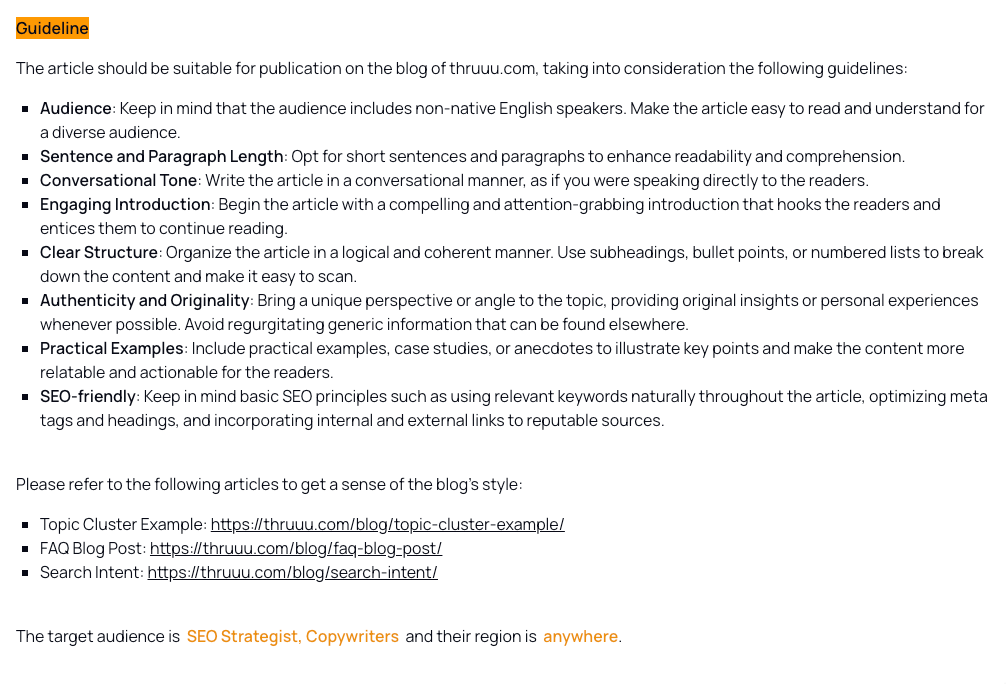
With thruuu, you can create multiple brief templates, and it’s a good idea to have separate templates for each website or client to maintain alignment with specific needs.
Indicate Frequent Terms and Questions
Why include frequent terms and questions in your content brief?
I like to have these at the top of the content outline, as it gives the writer direction on organizing the content and which key terms to include.
Again, thruuu simplifies this process by automatically pulling these frequent terms and questions into your content brief.
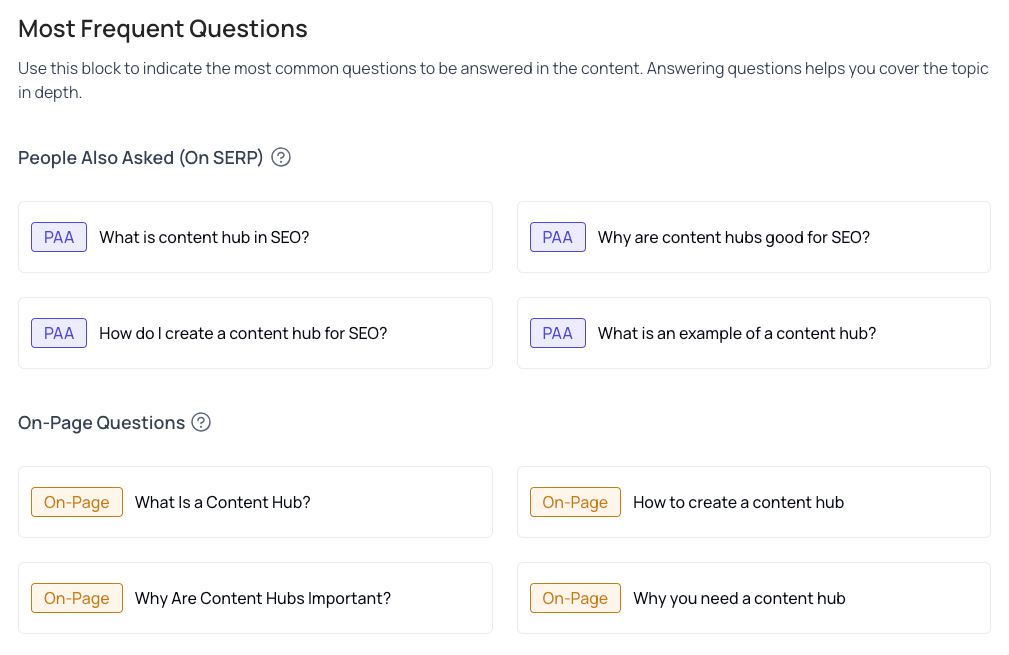
Include Resources for Writers
Writers need to do their own research, and the best way to guide them is by listing the main sources they should refer to.
These could be top-ranking articles from Google or insightful social media posts.
You save them time and ensure the content is well-informed by pointing them in the right direction.
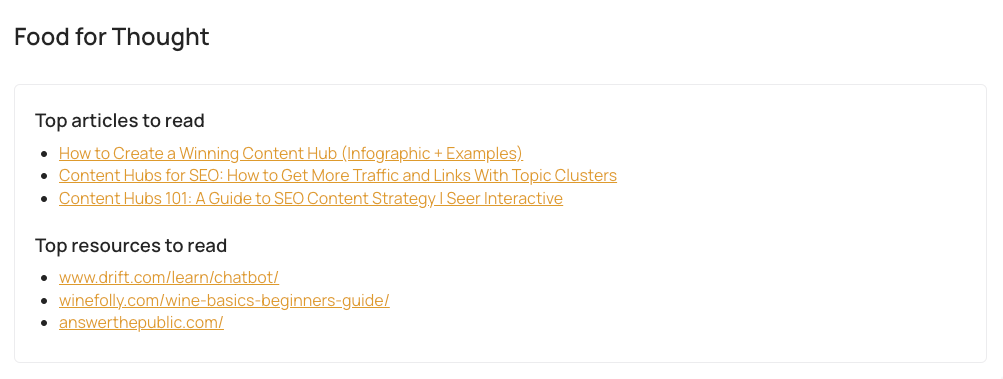
Use a Content Brief Generator
A content brief generator can dramatically speed up the process, helping you create briefs 10x faster. It pulls key information related to your target keywords and includes tools that streamline content outline creation.
The thruuu content brief generator is designed to help you work faster by giving you access to the correct data and insights.
The following section will dive deeper into how this tool works.
Tools for Streamlining the Content Brief Process
The thruuu Content Brief Generator is designed to help you create content briefs faster and more efficiently.
By reducing research time by up to 90%, it pulls key data directly from the SERP and compiles it into a user-friendly interface, allowing you to generate effective SEO briefs in less than 10 minutes.
You can quickly create structured content tailored to your topic and audience with AI-powered outlines and competitor insights.
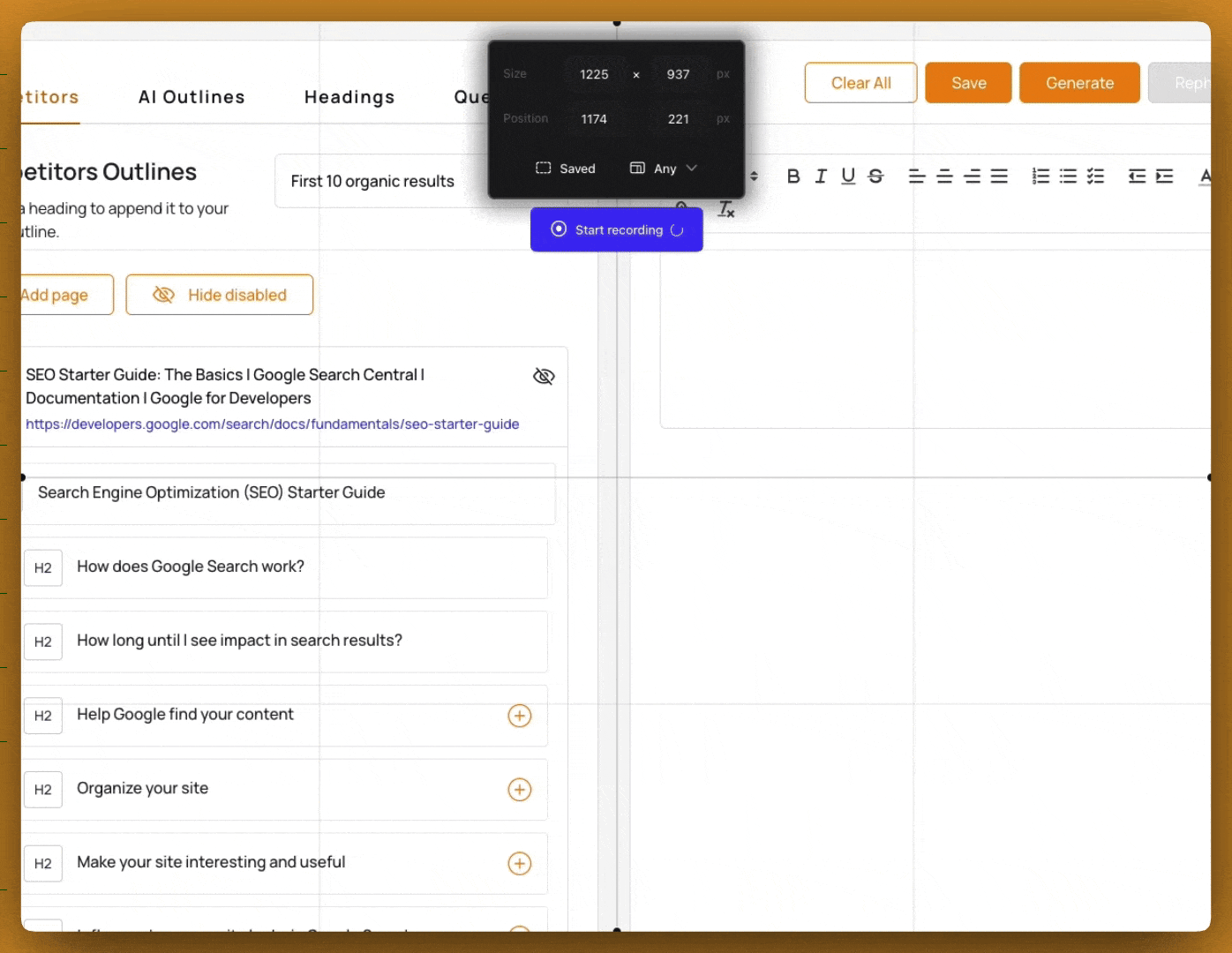
The tool also suggests optimized titles and descriptions based on search intent, enhancing your content’s visibility.
thruuu also streamlines collaboration, allowing you to share briefs with your team and convert them into documents for easy content creation.
With customizable templates and pre-filled data, you can save time while maintaining project consistency.
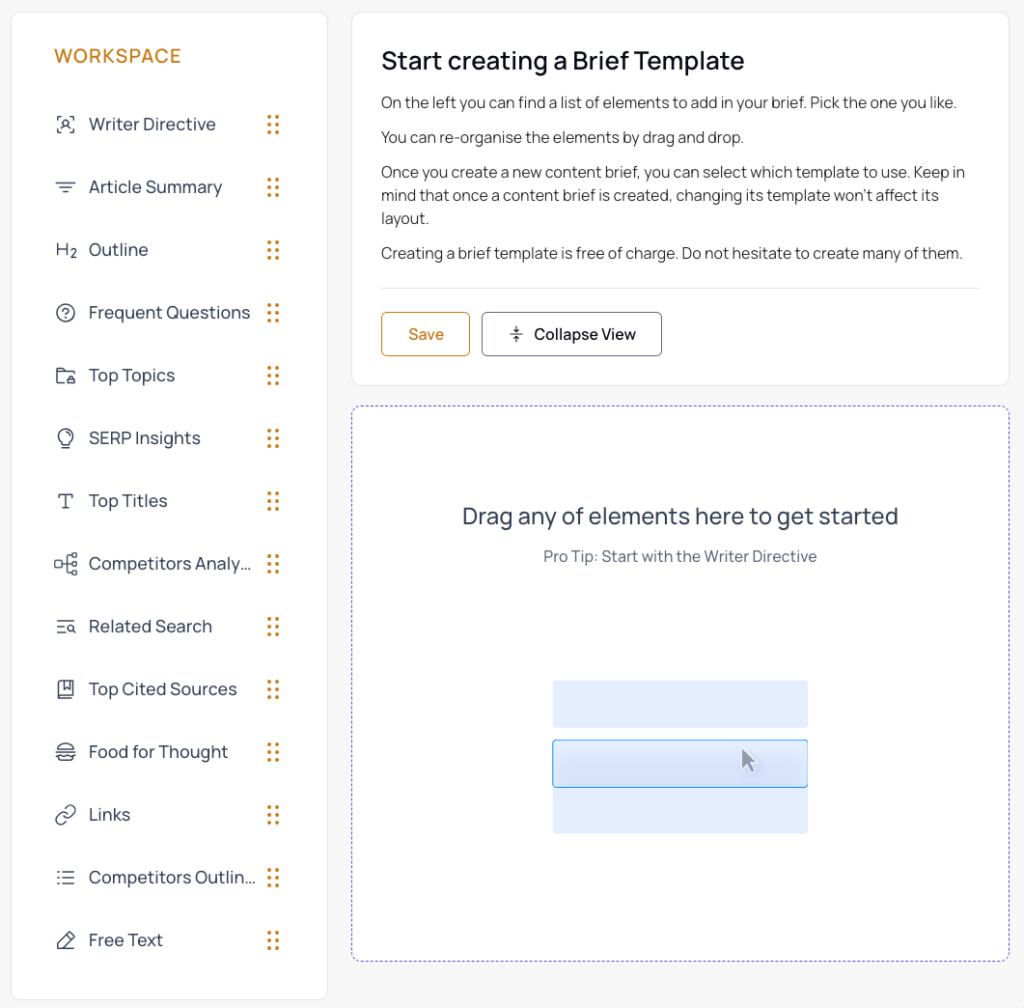
In short, the thruuu Content Brief Generator accelerates your workflow, helping you produce high-quality content briefs quickly and efficiently.
Everything You Need to Write Better Content Briefs
With the thruuu Content Brief Generator, reduce your research time by 90% and compile data from the SERP in a user-friendly interface
